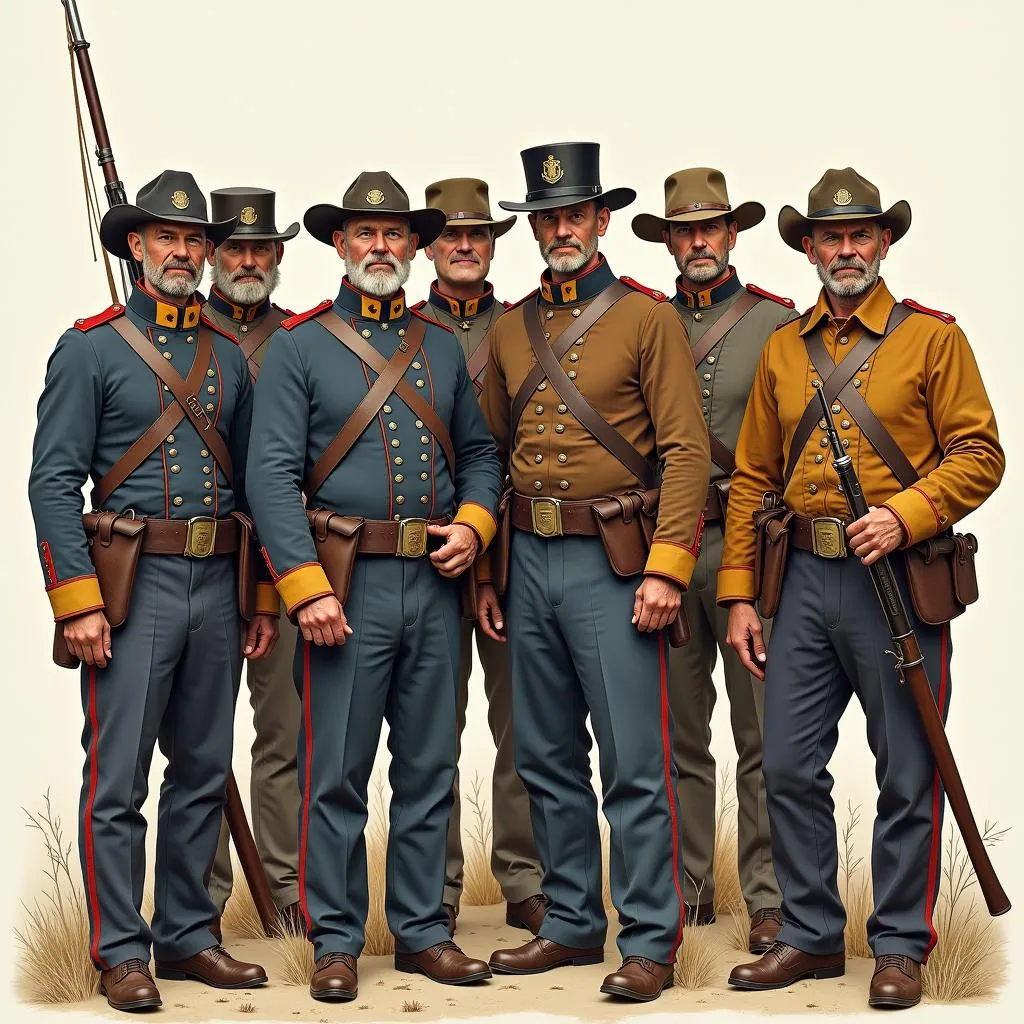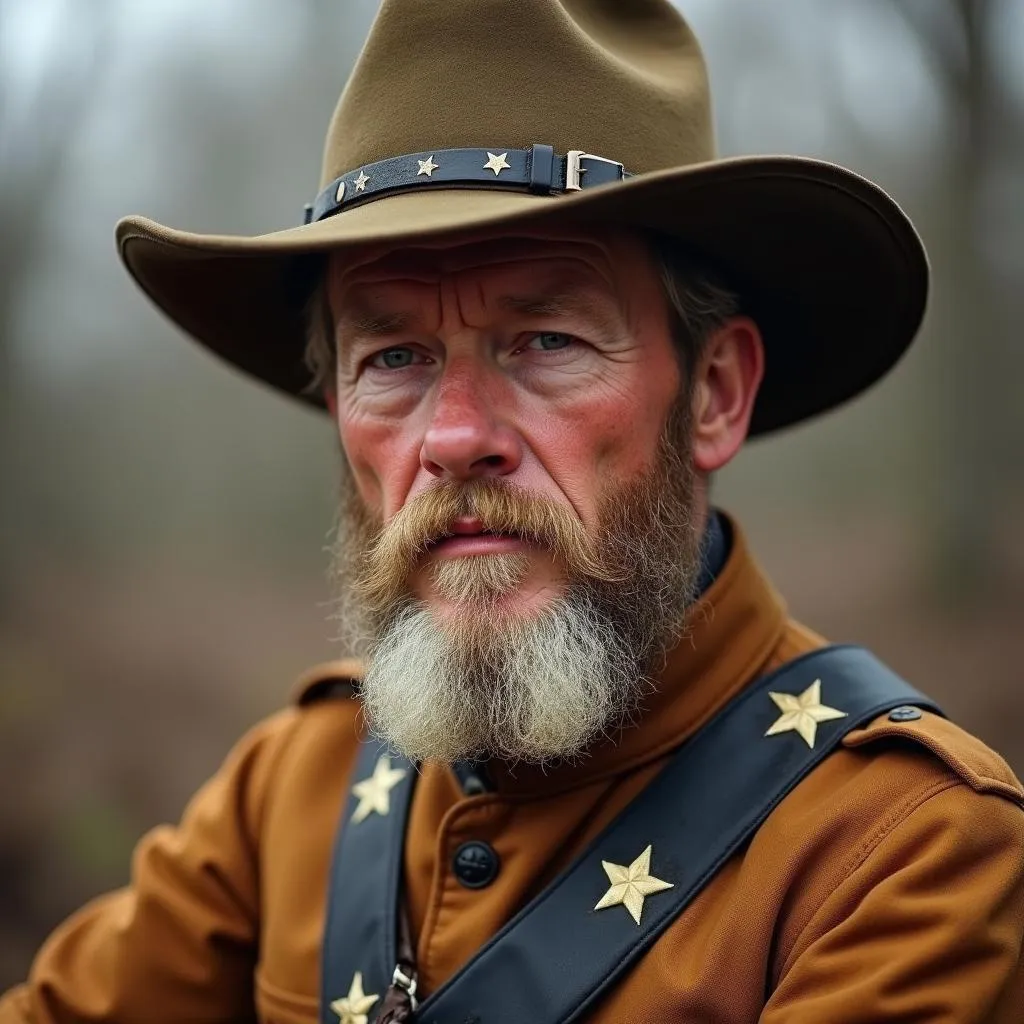The uniforms worn by Confederate soldiers during the American Civil War are often a source of curiosity and debate. While the iconic image of the Confederate soldier might conjure up visions of a specific hue, the reality is more nuanced. Let’s delve into the history of Confederate uniforms and explore the color variations that existed.
The Myth of a Single Confederate Uniform Color
Contrary to popular belief, there was no single, standardized uniform color for the Confederate army. The Confederacy, plagued by shortages throughout the war, struggled to equip its soldiers with consistent attire. Supply issues, coupled with the decentralized nature of Confederate production, resulted in a wide array of uniform colors and styles.
 Confederate Soldiers in Various Uniforms
Confederate Soldiers in Various Uniforms
Early War Uniforms: A Mix of Gray and Blue
In the early days of the war, Confederate troops often wore whatever uniforms they had from their pre-war militia service or could acquire through other means. This resulted in a mix of colors, including gray, blue, and even some captured Union blue uniforms. However, as the war progressed and the need for distinction arose, gray became a more prominent color for Confederate uniforms.
The Rise of “Confederate Gray”
Several factors contributed to the association of gray with the Confederacy. Gray wool was readily available in the South, and the color provided a practical camouflage advantage in the field. Additionally, the Confederate government officially adopted gray as the regulation color for uniforms in 1861, although achieving widespread uniformity proved challenging.
Beyond Gray: The Prevalence of Butternut
While gray dominated, many Confederate soldiers wore uniforms in shades of brown, often referred to as “butternut.” This distinctive color resulted from dyeing homespun cloth with natural dyes derived from walnut hulls, acorns, and other readily available plants. Butternut uniforms were particularly common among soldiers from rural areas and those serving in the war’s later years.
 Confederate Soldier in Butternut Uniform
Confederate Soldier in Butternut Uniform
Variations and Adaptations
The diverse colors of Confederate uniforms were further amplified by fading, wear, and battlefield conditions. Exposure to the elements, limited laundering, and repairs made with whatever materials were available created a patchwork appearance for many soldiers.
The Significance of Uniform Colors
While the lack of standardization in Confederate uniform colors posed logistical challenges, it also contributed to the mythology and symbolism surrounding the Confederacy. The various shades of gray and butternut, born out of necessity, came to represent Southern resilience, resourcefulness, and a distinct identity.
Conclusion
The question of “what color were the Confederate uniforms?” does not have a simple answer. The Confederacy’s uniforms were a tapestry of colors, reflecting the challenges, resourcefulness, and regional variations that defined their struggle. While gray remains the most recognized color associated with the Confederacy, it is essential to acknowledge the prevalence of butternut and other shades that painted a more complex picture of Confederate attire.

